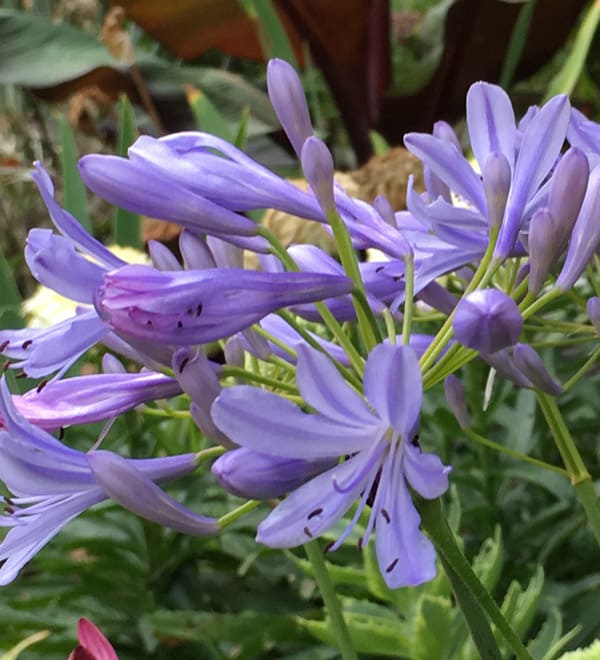These Agapanthuses have brightly variegated leaves, brightening up your garden even when not in bloom. Lilac flowers appear in the summer and can be cut for indoor flower bouquets.

These Agapanthuses have brightly variegated leaves, brightening up your garden even when not in bloom. Lilac flowers appear in the summer and can be cut for indoor flower bouquets.
6-9, 12-24
15°F to 20°F USDA zones 8B–10
12-16" H x 18-24" W
Accent, Border, Container, Edging, Mass planting
Evergreen
Slow
Full coastal sun to part shade in hotter climates
Attracts Pollinators, Clumping Habit, Compact habit, Cut Flowers, Disease / Pest Resistance, Drought tolerance, Dwarf Habit, Heat Tolerance, Longer Blooming, Returns Year After Year, Variegated Foliage, Water-wise
Feature
Lilac buds open to sky blue to lilac flowers
Spring to Summer
Low Water Once Established
Fertilize yearly in spring
Pruning
Remove old flower stalks after bloom. Divide every 5-6 years.
Well-drained garden soil
1. Dig in your native soil a hole as deep and wide as the container. We recommend planting in native soil for best acclimation.
2. Fill the hole with water and thoroughly water the new plant; allow both to drain.
3. Gently place the plant on its side and remove the pot. Place your hand on the bottom of the plant and put it in the hole.
4. Return native soil around the root ball, wetting and gently tamping down.
5. To complete, create a shallow trench around the base of the plant to contain the water when watering.
6. Mulch 1–2” deep around the plant, avoiding the area closest to the stem.
Your zip code 77382 is located in Zone: 9a with a temperature range of: 20 to 25 °F.